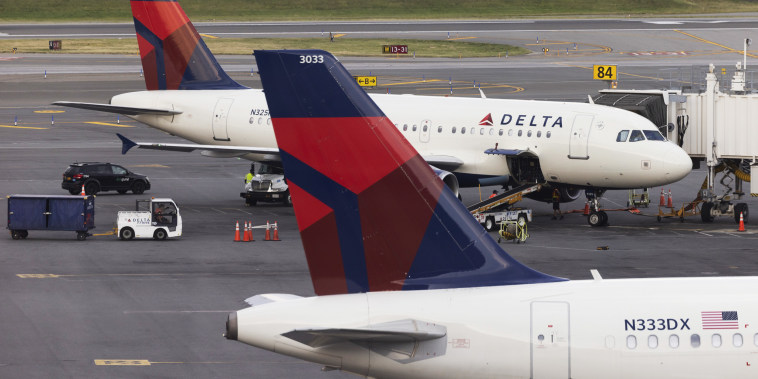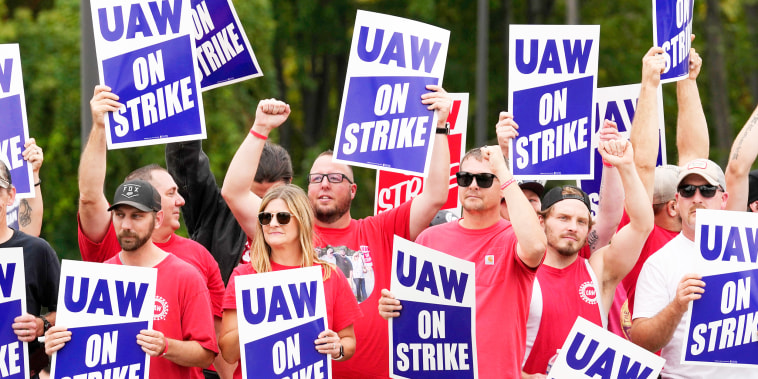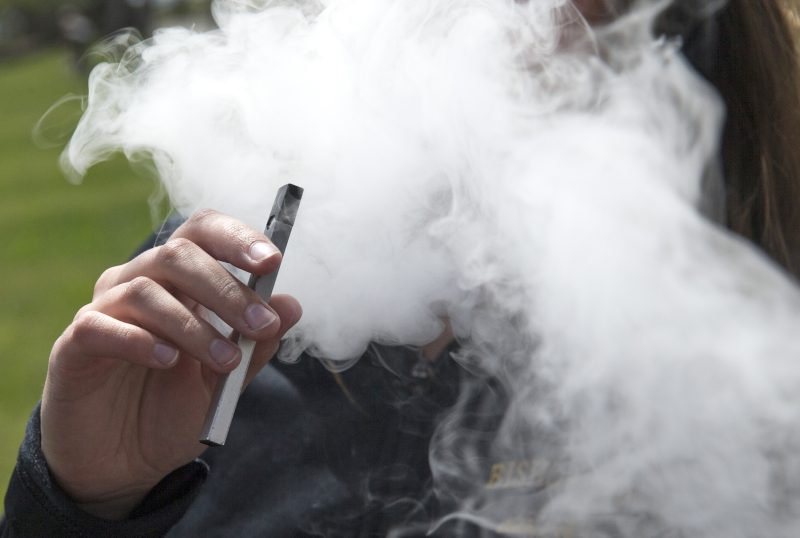
Caroline Ellison, who led the digital currency hedge fund connected with Sam Bankman-Fried’s FTX, is continuing her testimony in his criminal trial Wednesday.
Ellison, who is also Bankman-Fried’s ex-girlfriend, is considered the star witness in the prosecution’s case. Bankman-Fried faces seven federal charges, including wire fraud, securities fraud and money laundering in connection with his oversight of the now-defunct FTX and Alameda Research, both of which filed for bankruptcy last year.
He has pleaded not guilty to all of the charges. His defense attorneys began cross-examining Ellison late Wednesday afternoon and will continue Thursday.
In less than a year, Bankman-Fried, 31, has gone from a crypto titan and a rising global player with a net worth estimated at $16 billion to a defendant whose closest associates are testifying against him in a case that could put him in prison for decades.
Ellison is at the center of that. On Tuesday, she testified that Bankman-Fried told her to steal some $10 billion from FTX’s customers and use it to repay firms that had lent money to Alameda Research, the crypto trading firm she was leading.
‘Sam directed me to commit these crimes,’ Ellison said in court Tuesday after she told prosecutors that she, Bankman-Fried and others had committed fraud.
She also said that Bankman-Fried set up the system that let her move the money.
Ellison started at Alameda as a trader in 2018. She testified that after the hedge fund suffered large losses that year, Bankman-Fried made getting more money a top priority. To that end, he told Alameda employees to get loans on any terms they could.
That was risky, because lenders could call those loans in at any time. Ellison said there were enough of them to bankrupt Alameda if the loans all became due and payable immediately.
She said Bankman-Fried also tried to strengthen the firms by creating the digital token FTT. She said Alameda owned 60-70% of the supply of the coin, which cost essentially nothing to make. When its market price rose from an initial 10 cents to $50 over time, Alameda gained billions on paper.
Ellison is testifying under a deal with the government after she pleaded guilty to a series of fraud charges and conspiracy to commit money laundering. FTX co-founder Gary Wang also testified against Bankman-Fried this week after pleading guilty to fraud charges. Both are hoping to get their eventual sentences reduced.
Former FTX technology head Nishad Singh also pleaded guilty to fraud charges related to the implosion of FTX and Alameda.
‘A constant state of dread’
In 2021, Ellison became Alameda’s co-CEO, and later became sole CEO. However, prosecutors say Bankman-Fried was calling the shots. Bankman-Fried’s lawyers have argued that Ellison was fully responsible and that she mismanaged the company, including by failing to make protective hedge trades that could have reduced the risk of big losses.
Ellison testified that Bankman-Fried told her to put the growing value of the FTT tokens on Alameda’s balance sheet so it could borrow money. She said she felt that was misleading, but that he persuaded her to proceed.
Alameda later did the same with other coins that gained a great deal of value because of Bankman-Fried’s involvement with them.
When her testimony continued Wednesday, Ellison told prosecutors about events in June 2022, when several crypto firms and exchanges failed and investors collectively pulled about $1 trillion out of the market.
Some of Alameda’s lenders were asking for their loans to be repaid, as she feared they would. Ellison testified that she knew the only way to repay them was to take money from FTX customers.
She said Bankman-Fried told her to do just that, and that he knew the money was secretly being taken from those customers.
Ellison told the court that when a major lender — financial services firm Genesis — asked to see an updated Alameda balance sheet, she, Bankman-Fried, Wang and Singh brainstormed ways to make the company’s financial position look stronger so that Genesis wouldn’t ask for more money back.
They prepared a variety of different balance sheets to show Genesis, she said, testifying that she ‘was in a constant state of dread’ at this time. Bankman-Fried chose a balance sheet that hid the fact that Alameda was taking some $10 billion from FTX’s users.
By October, she said, Alameda had taken $14 billion to $15 billion from FTX’s users, and Bankman-Fried was trying to raise money to fill that hole.
Things fell apart in early November, after one of the doctored balance sheets was leaked to CoinDesk. Even though the document made Alameda’s situation look better than it really was, it worried investors, who saw that much of the firm’s balance sheet was made up of the FTT token.
The rival exchange Binance soon announced it would dump its FTT holdings, which caused the price to crash and made Alameda’s situation much worse.
The firm managed to briefly prop it up with more customer assets, but that soon failed.
Ellison told the court that Bankman-Fried warned her and others to be wary about how they communicate with one another and to set their private chats to auto-delete, but she turned off that feature a few days after the news broke.
The government showed the jury messages in which she told Bankman-Fried that she was relieved.
‘I think I just had an increasing dread of this day that was weighing on me for a long time and now that it’s actually happening it just feels great to get it over with one way or another,’ she wrote.
Ellison cried after the messages were shared in court.
There was a brief reprieve when Binance agreed to buy FTX, but the deal fell apart. FTX and Alameda sought bankruptcy protection two days after that.
Criminal charges were filed against Bankman-Fried, Ellison, Wang and Singh a few weeks later.
Bankman-Fried faces a separate trial in March over additional charges, including accusations of bribing foreign officials. Ellison testified that Alameda paid a large bribe to Chinese officials to get them to unfreeze about $1 billion on Chinese cryptocurrency exchanges.
Bankman-Fried has also pleaded not guilty to those charges.













